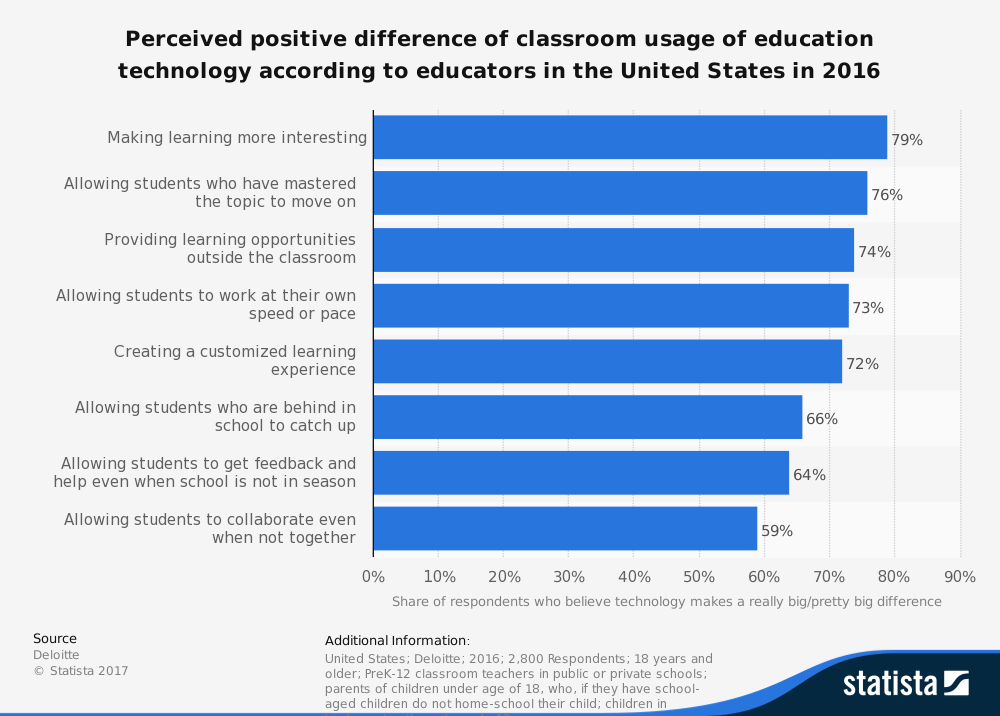Unveiling 2024: Balancing Technology in Education – Pros, Cons & Smart Strategies

The Pros And Cons Of Technology In The Classroom
What teachers need to know about
13 Pros And Cons Of Technology In The Classroom Teachers Need To Know
“>the pros and cons of technology in the classroom
Jackson Best Technology is becoming more and more prevalent in today’s classrooms. But for many of us teachers, we’re still not sure how to feel about it.
While we want students to be engaged and prepared for the future, it is difficult not to worry.
Are they truly going to need any more screen time?
This will cost you time and money.
There are pros and cons to technology being used in the classroom. We’ve listed 13 of them here so you can decide what role it should play in your teaching.

Such Form
These strategies are designed to help teachers find the right balance in using technology within their classrooms.
Today’s kids are spending more time looking at screens than reading books and not just at home. Teachers must decide how to use the digital tools available to them in the classroom.
Some classrooms view “edutainment,” which uses digital resources, as an effective way to engage students in learning. But some teachers argue that in the real world, learning isn’t all fun and games. They worry that students’ reliance on technology may diminish their ability to concentrate and think through complex issues.

There are many types of technology for classrooms
Technology in education allows you interact, inspire, and engage students within and outside of class. Some types of technology, like video streaming and podcasts, can meet the needs of different learning styles. The following technologies are useful for running online education programs. These include lectures, labs and class tutorials. You can find plenty of universities that integrate the above technology tools today in their degree programs.
Learning management systems (LMS) such as Canvas Moodle Blackboard allow you to manage courses, assign homework and tests, and track student grades.
Digital courseware such as ebook products by Pearson McGraw-Hill Macmillan can be used to create and distribute teaching resources (such as textbooks or question packs) to students as a way to create engaging homework experiences.
Classroom response systems including iClicker Poll Everywhere help students reflect on their learning via polls or discussions in class.
Microsoft Teams Zoom virtual classrooms allow you to hold synchronous online lectures. Participants can interact with each other in breakout rooms, or even’share your screen’.
Proctorio Honlock remote proctoring software helps to maintain academic integrity. It monitors student behavior during exams and flags any signs of cheating.
This article looks at the pros and cons of using technology in the classroom . This article will also discuss the pros and cons of using technology in your classroom to incorporate new assessment and teaching techniques into lesson plans.

Pros And Cons Of Technology In The Classroom, And Which Tools To Use
Technology in Education has always been around. But, thanks to the Covid-19 pandemic technology-based instruction took a sprint. Let’s face the facts, technology has not always worked in our favor. In this article, we will examine the pros and cons to technology in education.
Students are expressing a desire to go back to school, meet other students and engage in face-to-face conversation rather than staring at screens. Many teachers share that they feel technology-fatigue and are not willing to accept a positive solution. However, this has led them to long for their students back in class.
We do not claim that online teaching is better than face-to-face, however we all know that with using the right technology for the right purpose, disruptive learning environments are now made possible. Is there something wrong with online teaching? Let’s examine the “situational” benefits and disadvantages of using technology in the classroom.

Chalk Blog
Technology in the classroom is a hot topic among today’s educators. Technology is becoming a hot topic among educators today. With many students arriving to classes with smartphones and laptops in their hands, as well as districts seeking to fund technology for students’ education, it can be difficult to judge whether or not the new trend is beneficial. Like all educational changes, there are both benefits and disadvantages to using technology. Technology in education is a complex topic that teachers and administrators must understand to make informed choices for students.
Pro — Technology Can Streamline Tedious Tasks Taking attendance, tracking grades and even answering common student questions can take up a lot of a teacher’s time. Technology can make it easier to manage these mundane tasks. This allows teachers to devote their time to teaching the students. Top Hat for teachers allows them to securely manage the tests using a digital environment. Top Hat automatically grades and tracks students’ work and encourages greater student interaction.
Teachers fear that students will be spending more time on screens today than they should. According to the Common Sense Census: Media Use by Tweens and Teens study, students ages 8 through 12 spend an average of six hours of time daily on screens for entertainment. For students in high school or upper middle school, this number increases to nearly nine hours. The classroom might have more screen time due to the addition of technology. Although screens can be used to educate, their overall impact on the brain will rise.
The Pro — Technology is a Part Of Modern Life. Teachers’ goal is to prepare students for adult life. Today’s adult world uses technology. Students will not feel intimidated if they have more exposure to technology at school.
Con — Technology may not be used to its fullest Teachers must learn how technology can be integrated into lesson plans and weave technology instruction throughout the class in order to make technology work effectively.
Tech can boost student engagement when it is properly used and guided through lessons by a competent teacher. A comprehension check is one method to accomplish this. The teacher can assess the students’ comprehension during lessons and make any necessary adjustments to help them understand the concept better. Here are some tools to help you do so:
Padlet — Free tool that allows students to respond to questions in a class display. It allows them to check their comprehension as well as to collaborate.

There are pros and cons to technological implementation in the classroom
admin Teachers across America are more likely to incorporate technology and online tools in their classrooms than ever before, even though they may be at lower grade levels. Based on data from National Center for Education Statistics in 2008, there was an increase in the number of schools using computers for instruction from 72 to 189 between 1995 and 2008. According to the Center for Education Statistics, public school teachers also used computers for instruction in 2009. The average number of computers per school increased from 72 in 1995 to 189 in 2008. This clear trend suggests that educators and policymakers are now weighing the benefits and disadvantages of using technology-based learning methods in schools.
Technology can automate some of the more tedious tasks involved with school like grading and handing students their graded assignments back. Top Hat, an online service that facilitates discussion and grading at the higher education level has been adopted in more than 500 institutions. Blackboard, another online platform, is now available in many high schools and colleges across the country. This allows students and teachers to coordinate assignments and course materials and create templates. Teachers can also use technology to enhance their visual abilities. Through the use of more technology in the classroom, teachers can help students improve their presentation and writing skills. This is a crucial skill for the workplace.
However, national investment in technology-dependent classrooms has led to concerns regarding the educational consequences. Worries include about keeping students, especially younger children, focused on lessons and minimizing distractions, online security and safety for educational platforms online, undermining fundamental study habits and negatively affecting student’s ability to verbally communicate.
You should carefully consider these pros and cons, as schools from different areas often have very different educational needs. It will take significant federal funding to reach the technological gaps in high poverty areas and inner city neighborhoods. Cost is one of the biggest obstacles to moving to digital classrooms or schools, particularly in areas that are already far behind other schools. Obama made it a priority to amend the Federal Communication Commission’s $2.3 Billion E-rate Program, which subventions school and library telecommunications spends. E-rate funding goes to schools for broadband. It also pays for systems inside the school that connect students to the network. E-rate puts forward most of its money towards broadband and the concern now is that there will be little leftover for those internal networks that make it possible for schools to hook up classrooms. What use is high speed Internet if the interconnectivity in schools is not present? America’s priorities have changed over the last decade to digitally digitize classrooms in order to be more competitive globally. The challenge that faces school communities, particularly those most in need, is in mitigating some of the challenges inherent in effectively incorporating technology into a beneficial pedagogy while remaining financially above water.
National Center for Education Statistics Reports the prevalence of computers and internet access. Teacher’s use of educational technology in U.S public schools E-Rate Program Go to Top

21 Technology in the Classroom: Pros and Cons
Technology in the classroom isn’t a new concept. As children, 40-year-olds today have access to computers in their schools. Kindergarten classes taught children how to remove flies from the mouse in 1980s.
The prevalence of technology has made it easier for teachers to use the internet in their classrooms. The 1980s were a period when schools only had enough computers to provide technology support for one class. Today, many schools have students using their own computers and tablets as part of the learning experience.
The classroom environment can provide a wealth of opportunities for students to learn. There is also a higher risk of dependency on technology to recall information when necessary.
These are some of the most important technology considerations for teachers, parents, students and administrators.
What Are The Pros Of Technology in The Classroom
- Excessive screen time. Excessive screen time can make it seem like students are always in front of their device. Students have cell phones, tablets and computers all day.
- Distractions.
- Cheating.
- There is less human interaction.
- Unequal technology access. May 16, 2019,
How do technology benefits the classroom?
- It creates an environment that is more engaging. Although technology may seem like a distraction to your learning, it can actually encourage active participation.
- Incorporates Different Learning Styles.
- Improves Collaboration.
- It prepares children for their future.
- Get connected with your students
These are 5 Benefits of Technology in Education
Benefit #1: Makes Students More Engaged and Helps Them Retain Information.Benefit #2: Accommodates Multiple Learning Styles.Benefit #3: Encourages Collaboration.Benefit #4: Provides Instant Feedback for Teachers.Benefit #5: Prepares Students for the Future.Feb 11, 2020
What Are The Pros And Cons For Technology?
- Pros.Improves efficiency for Business. Technology has the best benefit of all because it improves efficiency in business processes.
- It saves you time.
- Communication is more effective
- Reduces cybercrime risks.
- Cons.
- Extreme dependability.
- Expensive.
.The Pros And Cons Of Technology In The Classroom
